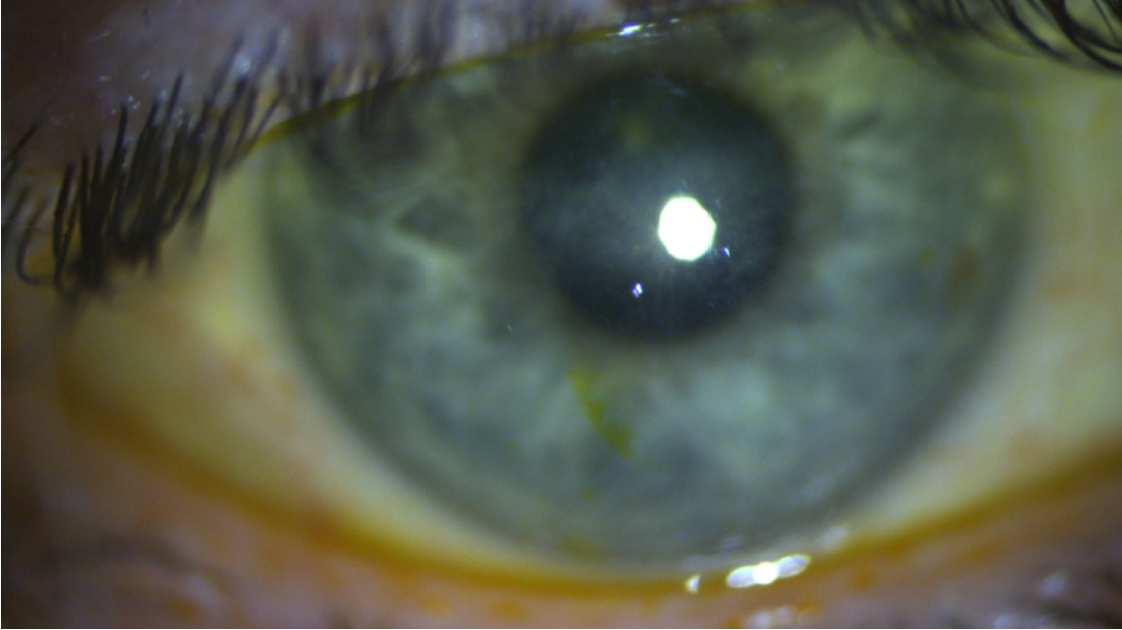I have no idea what LASIK (laser eye surgery) surgeons are thinking when they perform surgery on engineers with large pupils, let alone engineers with 10-mm pupils when dark adapted (Figure 1).
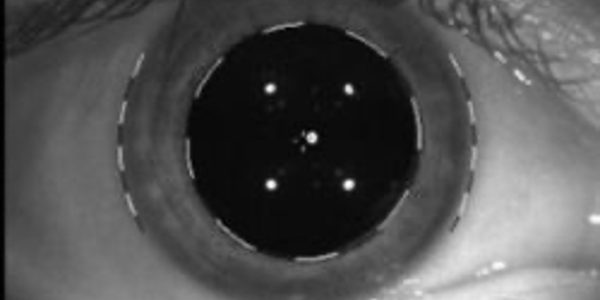
Figure 1. 10-mm dark adapted pupil.
Such an engineer sought out our office for a scleral fitting after considerable scleral lens research, on a mission to reduce his visual distractions. His pupils were larger than his LASIK treatment zones (Figure 2). At the time we were just beginning our journey into HOA-corrected lenses, but after multiple failed attempts, the solution ended up being much simpler: extraordinarily large scleral lens optic zones.
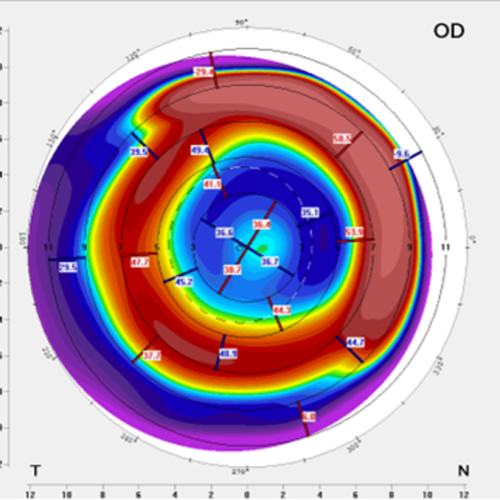
Figure 2. LASIK treatment zones clearly smaller than the pupil.
Most scleral optic zones range between 8-9mm. Because nearly all scleral lenses decenter inferiorly and temporally, those with large pupils can be troubled by light passing outside of the optic zone and through the pupil, creating all sorts of optical shenanigans.
I suspect this is happening more commonly than we think. In fact, if you look at the SLO image in Figure 3, you see that the ring of light produced by the edge of the 10-mm diameter optic zone clips the edge of the pupil.

Figure 3. SLO Image of a lens with a 10-mm optic zone. Notice how the ring of light created by the edge of the optic zone clips the edge of the pupil.
Since our patient is an engineer, I decided to introduce him to the Gaudi software designer in a quick informal Zoom call. The patient explained his issues with the lens and illustrated the glare pattern that he sees at night (Figure 4).

Figure 4. Illustration of the glare pattern drawn by the patient
Seeing the SLO image together with the glare pattern was an aha moment – the optic zone is smaller than the pupil and some of the glare comes from the light passing outside of the OZ.
Using Gaudi freeform scleral lens design software and scleral profilometry (Pentacam CSP), we designed 18-mm diameter scleral lenses with 12-mm optic zones made in Optimum Infinite (Figure 5).
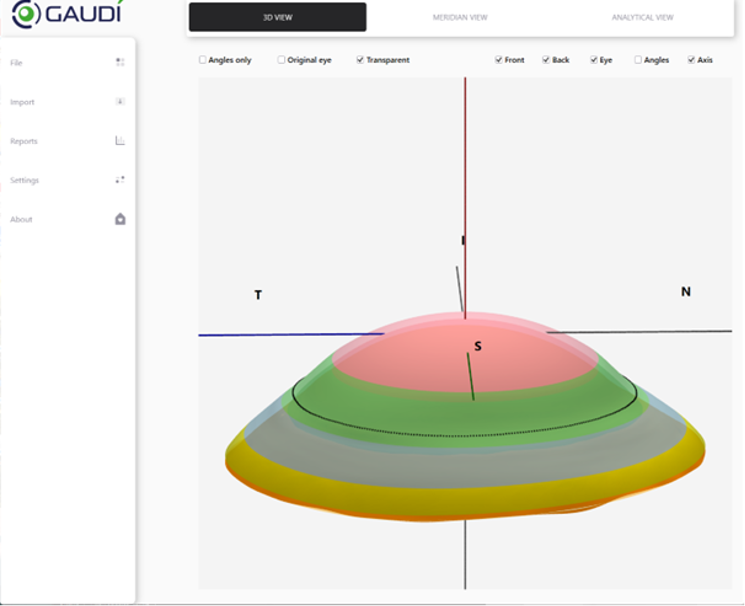
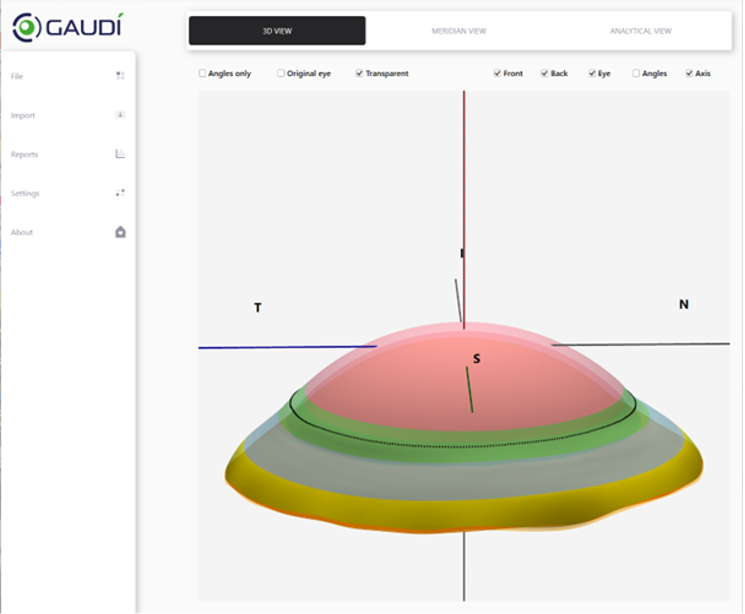
Figure 5. (left) Final 12-mm optic zone lens compared to (right) original 10-mm optic zone lens. The optic zone is shown in pink, mid periphery is green, landing zone is grey, and edge is yellow. Black dashed line represents the limbus location.
There’s nothing better than winning over an engineer.
“I have very large pupils, and when I was first fitted with lower diameter optic zone lenses, I would see starbursts in dim light and at night. Once I was fitted with the larger diameter optic zone, the aberrations were drastically reduced and the vision was greatly improved.”
Higher order aberrations (HOAs) excite scleral fitters, but it is important not to forget that the effects of low order aberrations (LOAs) often eclipse HOAs and, sometimes, the optic zone diameter trumps all.


